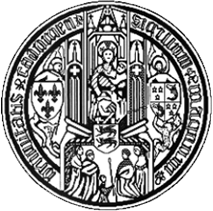Organization:University of Caen Normandy
Université de Caen Normandie | |
 | |
| Latin: Universitas Cadomensis | |
Former name | University of Caen |
|---|---|
| Established | 1432 |
| Budget | €247 M (2022) |
| President | Lamri Adoui (since 2020) |
Academic staff | 1,575 (2020–2021) |
| Students | 33,349 (2020–2021) |
| Location | Caen , France [ ⚑ ] : 49°11′26″N 0°21′52″W / 49.1906°N 0.3644°W |
| Website | www |
 | |
The University of Caen Normandy (French: Université de Caen Normandie), also known as Unicaen, is a public university in Caen, France.
History
The institution was founded in 1432[1] by John of Lancaster, 1st Duke of Bedford, the first rector being a Cornishman, Michael Tregury, afterwards Archbishop of Dublin.[2] It originally consisted of a faculty of Canon Law and a faculty of Law. By 1438, it already had five faculties. The foundation was confirmed by the King of France Charles VII the Victorious in 1452.
On July 7, 1944, the university was completely destroyed by aerial bombing during Operation Charnwood, an action of the Battle of Caen. Between 1944 and 1954, the university was based in the buildings of the regional teachers’ college. A new campus was designed by Henry Bernard and constructed between 1948 and 1957.[3] The new university was inaugurated on 1 and 2 June 1957. Its logo, the mythical Phoenix, symbolises this revival.[4]
Rankings
| Ranking | Rank |
|---|---|
| CWUR World | 808 (2020-21)[5] |
| QS World | 1201+ (2022)[6] |
| Subject | Rank |
|---|---|
| Oceanography | 151 |
| Medical technology | 201 |
| Mathematics | 301 |
| Chemistry | 401 |
| Clinical medicine | 401 |
Notable people
Notable alumni
- Thomas Campion
Notable faculty
- Doris Bensimon (1924–2009), Austrian-born French sociologist and academic
- Albert Gabriel (1883–1972), French associate professor of Art history (1923–1925)
Miscellaneous
- The mathematician Pierre Varignon, whose work would influence the young Leonhard Euler, earned his M.A. from Caen in 1682.
- Pierre-Simon Laplace (1749–1827) was introduced to mathematics in Caen by Christophe Gadbled and Pierre Le Canu.
- Henri Poincaré (1854–1912) taught there between 1879 and 1881.
- The university aligned with École nationale supérieure d'ingénieurs de Caen and French National Centre for Scientific Research to form the Information, Image, Automatic and Instrumentation Research Group of Cean, which is known for the G'MIC open source image processing framework.
- The university contains a famous scale model of Rome.[7]
- Those intending to become advocates or solicitors in Guernsey (or, until recently, Jersey) must complete three months' study of Norman law at Caen University (Certificat d'Études Juridiques Françaises et Normandes) prior to being called to the Guernsey or Jersey Bar, respectively.
- The Carré international is located here. The center is a hub for exchange students from around the world who wish to attend university in France. They take students from A1 (no French experience) to C2 (Native language).
- The university takes part in the XL-Chem Graduate School of Research[8] project, funded by the State via the National Research Agency.
- Thomas Campion physician, poet, and composer of lute songs received his medical degree in 1605.
See also
- List of medieval universities
- List of universities and colleges in France
References
- ↑ Unicaen.fr Fondée en 1432 par le roi d'Angleterre Henri VI.
- ↑ C.A. Dubray (1908). "University of Caen". The Catholic Encyclopedia. III. Robert Appleton Company. http://www.newadvent.org/cathen/03132a.htm. Retrieved 2008-02-07.
- ↑ UNICAEN. "Portail de la culture - Université de Caen Normandie - Histoire et patrimoine". http://culture.unicaen.fr/patrimoine/histoire-et-patrimoine-551225.kjsp.
- ↑ Unicaen.fr l'entrée du campus I, le Phénix, que la légende fait mourir dans les flammes et renaître de ses cendres, symbolise ce renouveau de l'université.
- ↑ "University of Caen Normandy Ranking 2020-21 - Center for World University Rankings (CWUR)". https://cwur.org/2020-21/University-of-Caen-Normandy.php.
- ↑ "Université de Caen Basse-Normandie" (in en). 2015-07-16. https://www.topuniversities.com/universities/universite-de-caen-basse-normandie.
- ↑ "Index". http://www.unicaen.fr/rome/.
- ↑ "XL-Chem Graduate School of Research". https://www.eur-xl-chem.com/school-of-chemistry/.
External links
- Official English web site, welcome.unicaen.fr
 |













